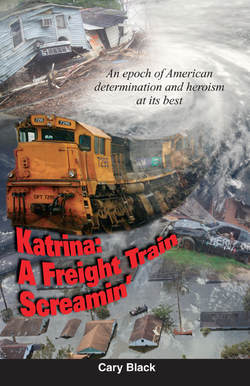Читать книгу Katrina: A Freight Train Screamin’ - Cary Black - Страница 11
На сайте Литреса книга снята с продажи.
ОглавлениеChapter 2
America’s Gulf Coast
The pre-Katrina Gulf Coast presented an abundant mix of activity and commerce. These qualities, punctuated by a diversity of culture, made the area unique and exhilarating. From New Orleans extending eastward along the Mississippi and Alabama Gulf Coast, a special climate of excitement was presented…from spicy Cajun food to that special New Orleans jazz sound…to casinos sitting on white beaches and the pristine warmth of the Gulf Coast capturing the adoration of tourists all over the world.
The climate of the Gulf Coast (subtropical in the south and temperate in the north) combined with the rich alluvial soils lend to a strong agricultural economy. Such conditions make the region one of the nation’s leading producers of such crops as rice, sweet potatoes and sugarcane. Other cash crops coming from the region are soybeans, cotton, hay and pecans.
The warm Gulf waters nourished by sediment-rich water from the Mississippi and Pearl Rivers yield major industries for fishing, shrimp, menhaden, and oysters. Louisiana is also a leading fur-trapping state supplying most of country's muskrat furs. Pelts are also obtained from mink, opossums, otter, and raccoon. The availability of abundant natural resources has contributed to New Orleans’ growth as a significant industrial and distribution center, making it one of the busiest seaports in the world.
Like Houston, New Orleans is located in proximity to the Gulf of Mexico and supports many oil rigs lying offshore. A substantial number of energy companies have their regional headquarters in the area, including BP, Chevron, ConocoPhillips, and Shell Oil Company. New Orleans is the home and worldwide headquarters of 2 Fortune 500 companies: Entergy Corporation, an energy and infrastructure providing company, and Freeport-McMoRan, a copper and gold exploration company.
Additionally, the Federal government enjoys a significant presence in the area. The NASA Michoud Assembly Facility is located in the eastern portion of Orleans Parish. This facility is operated by Lockheed-Martin and is a large manufacturing facility where external fuel tanks for space shuttles are produced. The Michoud Assembly Facility also houses the National Finance Center operated by the USDA. Other companies with a significant presence or base in New Orleans include BellSouth, Hibernia Corp., IBM, Navtech, Harrah's (downtown casino), Popeye's Fried Chicken and Zatarain's.
The Port of New Orleans handles about 84 million short tons of cargo a year. The Port of South Louisiana, based in the New Orleans suburb of LaPlace, handles 199 million short tons. The 2 combined to form the largest port in the world by bulk tonnage.
About 5,000 ships from nearly 60 nations dock at the Port of New Orleans annually. Chief exports are grain and other foods from the Midwestern United States and petroleum products. Leading imports include chemicals, cocoa beans, coffee and petroleum. The port handles more trade with Latin America than does any other U.S. gateway, including Miami.
New Orleans is also a busy port for barges. They use the nation’s main inland waterways, the Mississippi River and the Gulf Intracoastal Waterway, which meet at New Orleans. The port of New Orleans handles about 50,000 barges yearly. Ferries cross the river near the Garden district and the French Quarter; these ferries are free of charge to pedestrians, but motorists pay a $1 fee to cross on them.
New Orleans is also one of the most visited cities in the United States, and tourism is a major staple in the area's economy. The city's colorful Carnival celebrations during the pre-Lenten season, centered on the French Quarter, draw particularly large crowds. Other major tourist events and attractions in the city include Mardi Gras, the Sugar Bowl, and the New Orleans Jazz & Heritage Festival.
Additionally, and of significance, particularly with respect to the destruction caused by Katrina, is the fact that 48% of the hazardous chemicals coming into the city, come through the Port of New Orleans. The extent of chemical storage units and containers created an incredible challenge for the New Orleans Fire Department’s Special Operations Units in charge of Hazardous Wastes.
In considering the affects of Katrina, one must consider the economic and cultural aspects of the region to truly appreciate the impact that Katrina had on a thriving regional commerce and perhaps how she affected the economics of the country based on the Gulf Coast contributions to our economics and gross national product. Her presence and passing left a significant mark in history for the people, the region, and our country.
